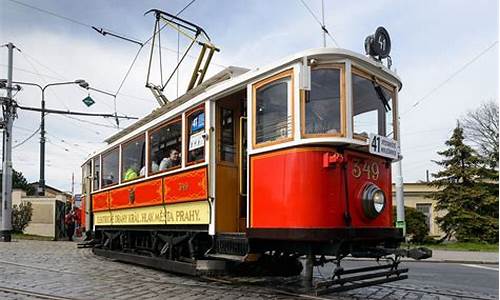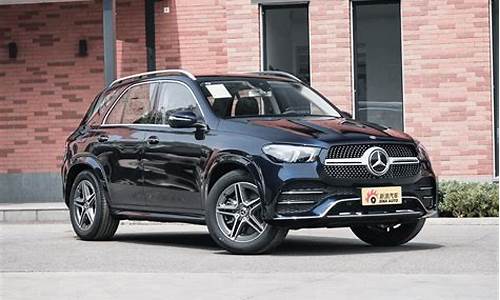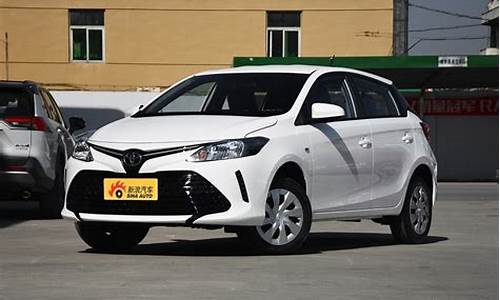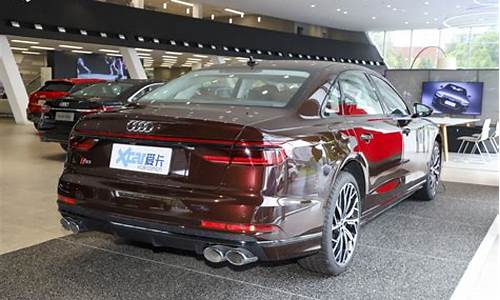praga_pragamatic翻译
大家好,今天我将为大家详细介绍praga的问题。为了更好地呈现这个问题,我将相关资料进行了整理,现在就让我们一起来看看吧。
1.二战德国坦克发动机是哪个公司提供的?
2.二战期间德国究竟设计过多少种型号的坦克?
3.捷克式轻机枪的资料和
4.sdkfz140 38T是纳粹的哪款车?顺便把数据给我。加送20财富值。

二战德国坦克发动机是哪个公司提供的?
梅赛德斯(不少的坦克用的都是大奔发动机,巨无霸”鼠式”坦克)
迈巴赫(大量的发动机都是他家的,包括著名的虎式坦克用的发动机)
斯柯达
Praga
保时捷
argus
MTU(奔驰的下属公司,很NB的豹式坦克就是他家的发动机)
二战期间德国究竟设计过多少种型号的坦克?
这里找到几篇,仅供参考:
·Based on the true story of one extraordinary man's life in occupied Warsaw during World War II, The Pianist marks the first time Roman Polanski has tackled the subject of The Holocaust, a historical event which directly affected his own life. This captivating, harrowing yet unsentimental account has plenty for movie fans, music lovers and the historically involved.
While giving a recital of Chopin's Nocturne in C# Minor for Polish radio in Warsaw, Wladyslaw Szpilman (Adrien Brody) is interrupted by Hitler's advancing military machine. As the civilised society inhabited by Szpilman and his Jewish family graphically begins to fall apart, Szpilman relies ever more on luck to see his way through the ghettoisation of the Jews, and the subsequent liquidation of the ghetto. Along the way, exactly who is good and who is evil is questioned as we see, in Polanski's words, "decent Poles and evil Poles, decent and evil Jews, decent and evil Germans".
From the early indignity of having to wear identification armbands and being barred from bus seats and restaurants, through the confiscation of homes and property to the indiscriminate killing practiced by Nazi officers, The Pianist feels like a personal experience rather than a director's attempt to summarise every fact of the period. It benefits from the approach.
And as the subject matter would suggest, this film not for the faint-hearted. Scenes of persecution and murder are depicted in chilling detail, while the supporting cast - including Maureen Lipman as Szpilman's mother - are faultless at portraying compelling characters. Brody, however, is the revelation. His cultivated good looks and engaging delivery are more than a little suggestive of Nigel Havers at his best. But after the liquidation of the ghetto, his family's forced departure and Szpilman's escape into the ruined cityscape around him, Brody turns his hand to playing a desperate man with disease-induced injuries and epic quantities of hair. And he's just as convincing - for he never once makes him a heroic figure.
The role of Chopin's exquisite music is of course paramount in the story. Through the central section of the film, which features little dialogue, Szpilman's long battle simply to stay alive is borne out by the lack of music. In one heartbreaking scene, he is put up in a safe house and finds that a piano has been left in it. Yearning to play it but fearful of discovery, he resorts to "air piano" - his fingers playing the piece an inch above the keyboard. And when, later, he is discovered by a benevolent Nazi commander (Thomas Kretschmann), the reintroduction of music into the film as Szpilman plays literally for his life is as compelling a cinematic event as you'll see all year, and one of the film's most astounding.
Brody is magnificent throughout in a performance worthy of a slew of awards, and Polanski's direction is at once restrained and personal, making for a film that sits alongside the best accounts of the Holocaust, including Schindler's List. The accurately rendered sets, based around a recreated complex of Warsaw's streets in the Babelsberg Studio, an old Soviet army barracks, a small town in the former East Germany and the rundown Warsaw district of Praga, convey an incredible authenticity. And Anna Sheppard's costumes for the cast of - literally - thousands display a remarkable attention to detail.
And yet the most astonishing aspect of The Pianist is the story on which it is based, penned by Wladyslaw Szpilman himself. The composer died in 2000, at the age of 88, a few months before production of this film began. Intense, epic and moving, his account of World War II is ultimately one of an ordinary man forced by circumstance to be extraordinary - and helped not a little by Lady Luck. The Pianist is a fitting memorial for the man, his people and the suffering they endured.
·The true story of Jewish pianist Wladyslaw Szpilman battling to survive the Nazi menace in the Warsaw ghetto of World War II, Polanski here draws on his own experience as a Holocaust survivor; one who witnessed his parents being dragged off to concentration camps and one who himself made a narrow escape.
The director turned down Steven Spielberg's offer to direct Schindler's List (1993) because, he insists, the material was too personal and too disturbing. The true horror was just more truthful than Roman felt comfortable with.
Strange, coming from the man who gave the world Rosemary's Baby (1968) and Repulsion (1965).
Still, his patience paid off: Not counting the fevered Oscar buzz around the picture, the diminutive Hollywood exile picked up the Palme d'Or at last year's Cannes and pretty much swept the board at most other critics' awards. (Famous English playwright and screenwriter Ronald Harwood and lead player Adrien Brody have also been lavished with praise across the global circuit.)
Although in the main this movie is cool and detached (much as Schindler's most definitely wasn't), Polanski is mindful to show as much compassion as he is the cruelty. There's no clear cut good and evil here: Good Jews mingle and come to blows with bad Jews, just as good and bad Poles are shown suffering the same predicament.
Care is also taken to show that, maybe, not all the German soldiers were raging psychopaths after all.
Everything is seen through the eyes of our central character, from the beginnings of his lone struggle to the dramatically intensified latter stages of hunger and total destitution.
Brody retains balance from start to finish and underplays the role to perfection, at the same time having us fear for his health.
Great support from, among others, British stalwarts Frank Finlay and Maureen Lipman as his parents add to the overall air of passivity and vulnerability that is finally smashed to smithereens.
Well worth the hype for once.
·THE PIANIST
**** New Roman by Pola?ski
Reviewer: Artur Kalicki from Warsaw, Poland
I put my signature under the words of Mr. Keizer. However, I do not share the opinion that "The Pianist" is not at the level of "Schindler's List". Though it is rather sure it will not be nominated for Oscar next year.
*****
Reviewer: Jazzo from Canada
I suppose that "happy ending", “melodramatic knockout “ or “Nintendo Games” are recipes for Oscar . No wonder, 99% of Hollywood productions just do that. “Though certainly not at the level of "Schindler's List," "The Pianist" is a worthy Holocaust drama and a welcome return to form for Roman Polanski.-Mark Keizer “ That the reason way, Mr. Reviewer. You should have more Kaiser’s buns before doing any movie’s reviews
***** The Most Important Movie To The Shoah History
Reviewer: Hans Werner from Berlin-Germany
Schindlers List was a story of one German. The Pianist is a story of one Jewish pianist and is a kind of resume of the most important events in the modern history of the world. It is a mistake to put this two movies into one review.
*****
Reviewer: Mack Sacco from California
At the end of the movie, not one person in the large audience stood up to leave...something I have never seen in a Polish audience. No one talked...we all just stayed till the last credits disappeared. This movie is honest without being depressing. If you force me to choose between "The Pianist" and "Schindler's List", I would chose the Polansk production, but perhaps we are talking about apples and oranges. I would agree with Hans Werner's statement that "it is a mistake to put this two movies into one review."
***** Hollywood Hallucination
Reviewer: Non-Hollywood Reviewer from Netherlands/South Africa
Apologies for my biased opinion, but Its really infuriariting to see comments saying that this film is not of the "Schindlers list" standard. Granted - Schindlers List was a skillful piece, fit for hollywood with big name actors and fast-food digestible script and feel. It doesnt come close to the emotive realism, intense artistic sublety and irony of the pianost - a true artwork. As sad a story it was, it was enriching in both a true display of history, art and the human psyche. Personally, the only other film I can think of in this leaugue in this genre is "Life is Beautiful" which although shockingly different in its approach - was layered in the tragedy of truth and the courage of character. Definitely recommend this one.
*** I Must Disagree
Reviewer: Anonymous from Anonymous
Beautifully acted and filmed, the movie provides an accurate chronicle of historical facts, but presents nothing new emotionally, intellectually or historically.
**** Sad But Real
Reviewer: Eitan from Israel
It is good that we have films to remind us of the Holocaust, because it seems that the world is forgetting. It is not Schindler's List, but performed beautifully and delivers the message.
(none) Oscar for Polanski?
Reviewer: Kevin from Anonymous
Maybe he'll come to pick it up in person. Then the cops can finally throw his butt in jail where it belongs. ost?v?Brno)签署了生产合约合作生产。哈力克随后加入了设在布尔诺的捷克国营兵工厂,协助完成了生产蓝图的绘制。产生出来的产品就是布拉格26型轻机枪(lehky?kulomet?praga?vzor?26),样枪于1926年4月经捷克国防部验收合格,同年开始正式量产,定名为布尔诺国营兵工厂26型(Zbrojovka?Brno?vzor?26?即ZB-26)。
正式名称为Flakpanzer38(t) 2cm Flieger Abwehr Kanone Panzer,制式编号SDKFZ140FLAKPANZER
38T是一种临时设计的车辆。由于在43年5月MOBELWAGEN(家具搬运车)4联20毫米的最初方案没有获得通过,而部队对于防空火力的需要又十分迫切,所以临时由38T底盘改装。1943年10月15日,方案通过,获准生产。
改装基于38T
L/M型底盘,由捷克的BMM公司(德国入侵前生产38T的CKD公司)承担。一共下了1批订单150辆,从43年11月到44年1月生产了141辆。剩下的底盘被改装成SIG33/2式自行步兵炮蟋蟀K。
正式名称为Flakpanzer38(t) 2cm Flieger Abwehr Kanone
Panzer,制式编号SDKFZ140。
该车实际上是作为4号自行高射炮投产前的替代产品,并不算是真正意义上的自行高射炮。可以说只是被赋予了机动能力的高射炮而已,可以被归为高炮载运车。在设计思想上和蟋蟀K没有什么本质区别。43年12月16日,向希特勒进行了展示。
车体布局
与标准的38T底盘相比,车体做了改动。由前至后分别为传动室,驾驶室,动力室,战斗室。传动室上方使用了新的更倾斜的装甲板,上面开有更大的检修盖。驾驶员在车体右边,引擎布置在驾驶员后面,用一块装甲板与驾驶员隔开。驾驶员上方是两片半圆型的铸造式仓盖,内有皮革衬里。战斗室内容纳有车长,炮手和装填手。战斗室顶部开敞,周围由8块几乎垂直的铰接式装甲板围合,围合时使用锁销固定。对空射击时射界良好,但对地面目标射击时,需要把装甲板放下。整车部分装甲采用了焊接式,但大部分装甲还是角钢框架的铆接式。全车尺寸4.61M*2.14M*2.25M。重量9.8吨。
战斗室后置的38T系列变形车驾驶室是基本相同的。这张可能是一辆黄鼠狼3
M型。驾驶员左侧是传动室,在驾驶员左腿上方的是转向操纵杆,另一个在右边,被阴影挡住了。在转向操纵杆前面是齿轮变速箱的换档操纵杆,直接安装在变速箱上面。
装甲
整车采用铆接装甲
车体前上 : 10mm/25°
车体前中: 20mm/75°
驾驶员: 20mm/20°
车体后上: 10mm/65°
车体后下: 10mm/45°
车底: 8mm/0°
车体侧面: 15mm/90°
车体上: 8mm/0°
上部战斗室前: 10mm/70°
上部战斗室后: 10mm/-65°
上部战斗室侧上: 10mm/-65°
上部战斗室侧下: 10mm/73°
行动装置
行动装置与38T相同,采用Praga
EPA式水平对置6缸水冷汽油机,气缸容积7。75升,2600转/分时输出150马力。燃料218升,耗油量1.18升/KM(公路),1.56升/KM(越野)。传动装置为Praga/Wilson
CV/TNHP,5个前进档1个倒档。悬挂装置采用两轮一组片状弹簧平衡式悬挂,每侧4个胶缘负重轮,前主动轮,后诱导轮,1个托带轮。每条履带由93块履带板组成,宽293MM,接地长2.92M。最大速度42KM/H,公路速度35KM/H,越野速度20KM/H,公路行程185KM,越野行程140KM,过垂直障碍高750MM,爬坡30度,过壕宽1.8M,涉水深0.9M,单位压力(硬地面)0.64KG/平方CM,转向比1.48,单位功率15.3马力/吨。
武装
战斗室内安装20MM,112.5倍口径的38型高射炮(20mm Flukabwehrkanone
38),此炮是替代30型的产品,由毛瑟(MAUSER)厂改装自莱因金属公司生产的航炮。火炮安装在一个圆形的基座上,360度旋转。39年晚期开始生产,40年早期进入服役。与30型相比,最大的改进是提高了发射速度。理论射速480发/分,几乎是30式的两倍。实际射速当然小得多。一个弹匣装20发,所以支持不了几秒种就要换弹匣。这降低了开火速度。另一个改进是减轻了战斗重量,使得该炮更利于运输或装载在不同底盘上。但减重带来的缺点是高速连续开火引起的震动更大。所以许多炮手实际上更喜欢更慢更稳的30型。
FLAKPANZER38T
战斗室,炮向右90度
观瞄方式
1,Flakvisier
38瞄具,电子式,通过装设一个带有光学反射镜的电子计算装置控制火炮的旋转和俯仰,以使炮手视野可以始终追踪目标。该装置安装在炮手3*8瞄准镜旁边。无论是机械式还是电子式的高炮瞄准系统,都要提供两种最基本的瞄准功能:一是使火炮能始终同步对准不断运动的目标,同时必须考虑到后座力的影响。二是计算出大致的炮弹和目标运动轨迹相遇的位置。
2,Schwebekreisvisier
30瞄具,直线式,一块印有目标轨迹和速度的标尺夹在瞄具里,一个滑轨,前面是一个可以前后调节的十字环,后面是一个对齐点的小珠。十字环标定目标的距离,调整十字环的中心和珠对齐以给出炮手大致的开火角度。此种瞄具在类似装备上使用较多,但在FLAKPANZER38T上较少见。
3,FLAKPANZER38T最常用的Schwebekreis-Visier Erdzielfernrohr
3*8瞄准镜,对付慢速移动的目标很有用。
观瞄装置通过瞄具架装在火炮后方。可以看到引擎室占据的战斗室空间和上面的座垫。这辆车没有安装无线电,而且战斗室装甲是焊接的,没有用销锁固定。可能是一辆试生产型。
防盾,炮手有一块额外的开孔的防护钢板,一般为了不影响视野,使用这块钢板时去掉右防盾。防盾增加了120公斤重量,多用在车载型或攻击地面目标时。
开口的右防盾
38型高射炮使用圆型的俯仰机构,这是与前一代30型高射炮外观上的主要区别。炮耳轴通过圆形的轴承固定在炮架上。俯仰角度-5到90度(拖拽式FLAK38为-20到90度)。炮手座位在右边,旋转和俯仰机构包括粗调和精调,炮手通过火炮下面的转轮控制方向,通过右边的转轮控制俯仰。在俯仰机构右边装有圆形丝网,用来收集弹壳的。炮手脚下有两个开火踏板,一个是点射,一个是连射。该炮配用8种弹药,其中两种是训练用的。多数弹药使用拽光弹辅助瞄准。初速900M/S。高爆弹是防空常用的。因为杀伤靠爆炸碎片,不需要直接命中目标。攻击地面目标时使用穿甲弹。配用40式2CM
Pzgr
Patr式钨芯穿甲弹,初速830M/S,可以在100M距离穿透40MM垂直钢板。但众所周知,钨芯穿甲弹并不是能大量装备的。射程2200M,备弹量1040发(720HE,320AP)。炮身左边是备用弹匣架,可以放置3个弹匣。
俯仰机构
战斗室前部有一个盒子用来装备用炮管,盒子左右两边各有一个装防毒面具桶的支架。圆形的炮座固定在战斗室地面上。在炮座侧面装有一个固定锁防止火炮在行军中转动。地面采用防滑钢板。弹药箱放在地上左右两侧。战斗室内右前方一部分被引擎室占据,在引擎盖上装了车长的坐垫,装填手的位置在战斗室左后方一个折叠的坐椅。对于高射炮来说,这样的战斗室有些狭小,尤其是战斗中,装填手的空间实在不方便。没有车内通话装置,只有FUG5型电台,装在战斗室左前方,上面有钢板保护。天线装在紧挨着战斗室左上角的位置。
可以看到38型高射炮特有的防盾和穿着炮衣的炮口制退器。战斗室前面的3块装甲板打开了。前面有一个架子撑住火炮。看起来不是行军固定器。很多车辆在使用中拆掉了火炮防盾以提供更好的视野。战斗室后方的水平条是挂MP弹袋的。MP装在黄绿色帆布包里。在照片中战斗室后面左右各一支。
使用情况
首批87辆于44年1月投入服役,配给各装甲师的防空排。主要是装备了党卫军部队。大部分在诺曼底损失掉了。到44年底,12SS师还有9辆FLAKPANZER38T,参加了阿登反击战。
评价
该车作为真正意义上的自行高射炮并不成功,原因是在此之前并没有一个纯防空战车的概念模型。设计的目的只是为高射炮提供机动能力和有限的防护力。但这作为真正能跟随装甲部队进行战场防空的战斗车辆是远远不够的。到了战争后期,20MM的口径已经远远不够。只能对中低空的敌机造成威胁,而且发射速度过快导致命中率降低,弹药浪费严重。而想靠密集火力网阻止
敌机,4联20MM还差不多。装甲太薄,在地面战中是很容易被摧毁的目标,敞开的顶部无法为乘员提供有效保护。可见,在战场最前线的车辆,只满足于为火力提供机动性还是远远不够的。机动性意味着底盘和体积的增大,无法再象单门火炮一样很容易获得良好的隐蔽,被发现机率的增加提出了对于防护的需要。这样的例子从犀牛式和猎豹式的区别就可以看出来。事实上,中小口径自行高射炮的发展一直向着降低车高,增强防护,使用专门的装甲炮塔方向发展。而开放式战斗室虽然后来有装载FLAK37和41的重型方案,但那已经是将自行高射炮和火炮载运车作为两个概念发展了。遂行的主要任务也不是在一线随部队冲锋而是远距离的反坦克。所以从此以后,德国的旋风和东风都相应地增大了装甲厚度,以至于最终的球型闪电的低高度全装甲炮塔出现
好了,今天关于“praga”的话题就讲到这里了。希望大家能够通过我的介绍对“praga”有更全面的认识,并且能够在今后的实践中更好地运用所学知识。如果您有任何问题或需要进一步的信息,请随时告诉我。
声明:本站所有文章资源内容,如无特殊说明或标注,均为采集网络资源。如若本站内容侵犯了原著者的合法权益,可联系本站删除。












